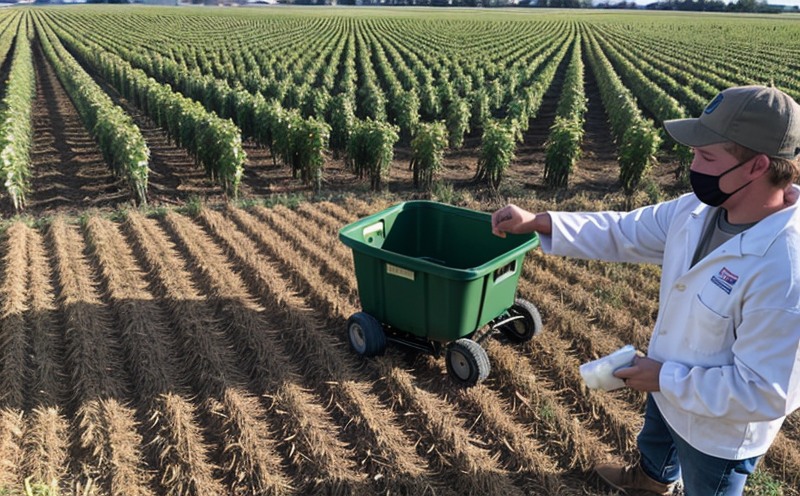Texture Profile Analysis Testing
The process of Texture Profile Analysis (TPA) is a critical component in ensuring consistent quality and marketability of post-harvest agricultural products. This technique provides detailed insights into the mechanical properties of foodstuffs, which are crucial for understanding their texture and consumer acceptance. TPA measures the physical characteristics such as adhesiveness, cohesiveness, springiness, chewiness, gumminess, and firmness.
In agriculture and forestry testing, particularly in post-harvest quality assessment, TPA is used to evaluate processed products like fruits, vegetables, nuts, and grains. Understanding these properties helps in optimizing processing conditions, improving product shelf-life, and enhancing customer satisfaction. The primary goal of texture analysis in this sector is to ensure that the final product meets both sensory expectations and commercial standards.
The application of TPA involves precise instrumentation capable of measuring force and displacement with high accuracy. This data is then used to generate a texture profile that can be interpreted by quality managers, compliance officers, R&D engineers, and procurement teams. For instance, a higher adhesiveness score might indicate better binding properties in processed fruits or nuts.
Standardization plays a vital role in TPA testing. International standards such as ISO 20574-1:2013 provide guidelines for the mechanical testing of food products. These standards ensure that all tests are conducted under controlled conditions, which is essential for consistent and reliable results.
The process typically starts with selecting an appropriate specimen preparation method based on the type of product being tested. For instance, fruits might be cut into specific sizes or shapes to ensure uniformity across samples. Once prepared, the specimens undergo TPA testing using a texture analyser equipped with the right probes and fixtures for the specific material.
The results from this analysis are then used by various stakeholders within an organization. Quality managers use these insights to refine production processes, ensuring that products meet sensory and technical specifications. Compliance officers leverage the data to ensure adherence to relevant food safety regulations. R&D engineers can utilize TPA findings to innovate new product formulations or improve existing ones. Procurement teams benefit from this information by selecting suppliers who deliver consistent quality.
Scope and Methodology
The scope of texture profile analysis in agriculture and forestry testing is broad, covering various processed products derived from agricultural sources. This includes fruits (like apples, oranges), vegetables (such as carrots, cucumbers), nuts (almonds, peanuts), and grains (rice, wheat). The methodology involves several key steps:
- Specimen Preparation: Specimens are cut into standard sizes and shapes to ensure uniformity.
- Instrumentation Setup: The texture analyser is calibrated according to ISO standards. Appropriate probes and fixtures are selected based on the material type.
- Data Collection: Force and displacement data are collected as the specimen undergoes compression or shear tests.
- Analytical Interpretation: The raw data is processed to generate a texture profile, which includes parameters like adhesiveness, cohesiveness, springiness, chewiness, gumminess, and firmness. These values are interpreted in the context of product quality attributes.
- Reporting: A detailed report is prepared summarizing the findings, including graphical representations of the texture profile.
The methodology ensures that all tests are conducted under standardized conditions, which is crucial for generating reliable and comparable data. This standardization also facilitates the integration of test results into broader quality management systems within organizations.
Eurolab Advantages
At Eurolab, we pride ourselves on providing comprehensive texture profile analysis services tailored specifically to the needs of agriculture and forestry sectors. Our advantages include:
- Expertise and Experience: With years of experience in agricultural testing, our team brings deep knowledge of post-harvest quality assessment.
- State-of-the-Art Equipment: We use cutting-edge texture analysers that meet the highest international standards for precision and reliability.
- Comprehensive Reporting: Our reports are detailed and include graphical representations, making it easier to interpret results.
- Customized Solutions: We offer tailored testing protocols based on specific product requirements and organizational needs.
- Fast Turnaround Times <|im_start|><|im_start|>⚗





